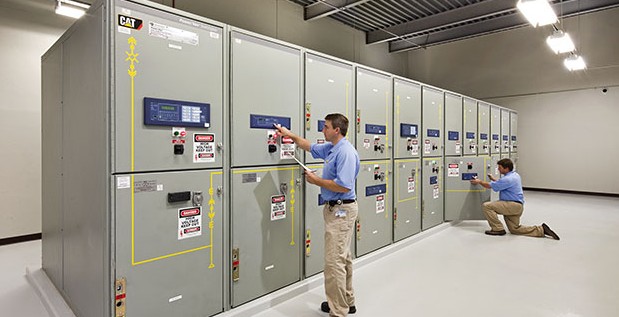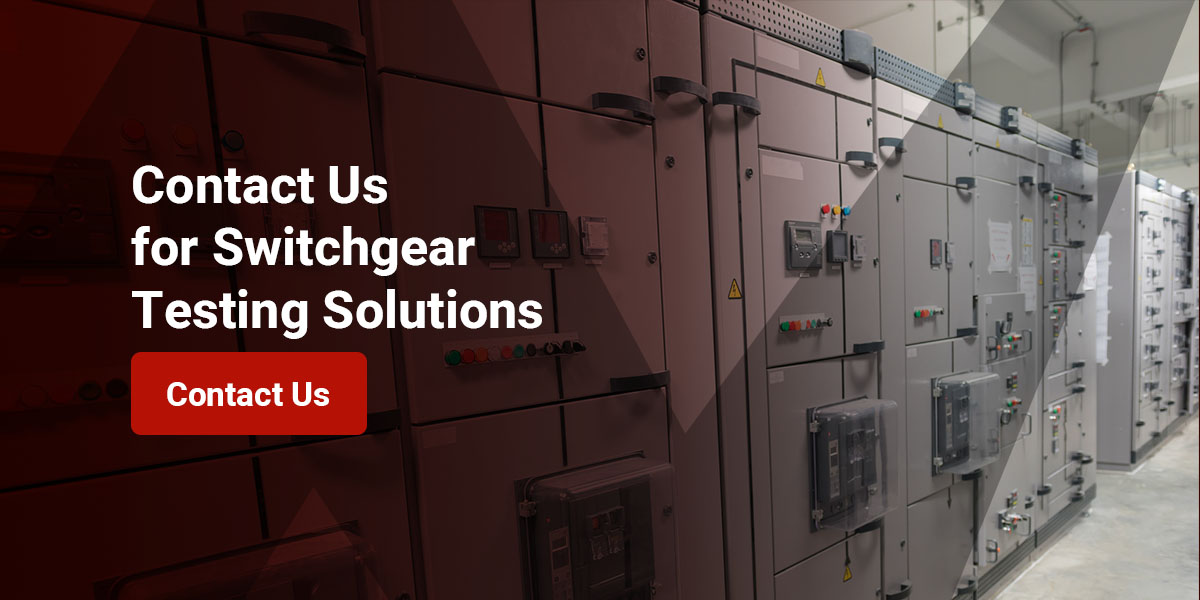Your switchgear is a vital component of any low-, mid- (MV) or high-voltage (HV) electrical system. Staying on top of maintenance procedures for your electrical system keeps your equipment functioning smoothly. With the right care, you can get years of usage out of your switchgear and electrical system.
Power Products & Solutions helps you stay up to date with necessary testing and maintenance procedures for your electrical equipment to help extend its service life.
Jump to:
- What Is Switchgear Testing?
- Switchgear Testing Requirements
- Switchgear Testing Procedures
- Types of Switchgear Testing
- How Often Should Switch Gear Be Tested?
- Why Is Switchgear Testing Important?
- Contact Us for Switchgear Testing Solutions
What Is Switchgear Testing?
Switchgear refers to a collection of circuit breakers, fuses and switches. This setup is the part of an electrical system that controls voltage transformation, circuit switching and, above all, system protection. The switchgear is the first line of defense against electrical issues and mishaps. Larger systems naturally require more of these components and may employ a collection of switchgear, which is called a switchgear lineup or assembly.
Some factors that can cause switchgear deterioration include moisture or corona discharge. Moisture is especially harmful and can cause premature aging, rusting and shortages in electrical equipment.
Switchgear Testing Requirements
Switchgear testing requirements include mandatory routine tests from the IEC 62271-100 standard. This standard outlines requirements for medium- and high-voltage three-phase AC circuit breakers that operate at 50- or 60-hertz frequencies. Some manufacturers may require additional tests and inspections to ensure switchgear meets declared ratings and functions smoothly.
A few mandatory switchgear tests include:
- Insulation resistance tests: This test applies voltage to switchgear insulation to determine the megaohm value of the insulation’s resistance. The equipment will specify the voltage level you should use for testing. If the test shows that the resistance is too low, it may signal that the insulation is weak and needs to be addressed.
- Mechanical operation tests: Routine testing of mechanical operations ensures components are correctly fitted and functioning. Tests should check mechanical operating times at minimum, nominal and maximum voltages to verify that mechanisms work as expected.
- High-potential (Hi-pot) test: Hi-pot testing, also known as dielectric withstand testing, uses a high voltage on circuit breakers to check insulation condition and quality. It monitors any current leakage and assesses the insulation’s ability to hold voltage. These tests should be performed after any repairs and cleaning.
Switchgear Testing Procedures
Switchgear tests must suit the voltage levels of the unit. Depending on the test results, a standard switchgear evaluation can turn into a maintenance procedure. With the right steps, you can keep everyone in the facility on board and perform all your required testing.
There are three phases of coordinating an outage for switchgear testing:
- Before: Gather all necessary materials and review your equipment history. Inform employees when you will be testing. Create a specific work plan and test schedule to streamline the process.
- During: Disconnect as necessary and employ safety measures. Perform inspection and cleanings. Test and replace essential parts. Perform a physical examination of and double-check work before restarting the unit.
- After: Talk to employees about any issues they encounter. Develop a report of testing results and necessary next steps.
Your switchgear testing methods can significantly impact the service life of your electric system. A professional technician from Power Products & Solutions can handle the bulk of the work and discuss maintenance plans and procedures.
Types of Switchgear Testing
Switchgear tests cover the physical condition, operation and functionality of the equipment. There are a few types of switchgear testing that coordinate well with circuit management. These tests work specifically with MV and LV switchgear components.
There are 5 standard tests for switchgear:
- Functional: Test for proper unit function.
- Contact resistance: Tests the contact resistance between current conductors.
- AC insulation test: Measures the insulation between open contacts, line and ground.
- Auxiliary circuit insulation test: Measures the insulation for low voltage units.
- Tightness test: The annual testing for tightness between breaker connections.
Most switchgear needs to be tested two to three times a year. Power Products & Solutions can help with scheduled and emergency maintenance procedures for your switchgear and other electrical components.
How Often Should Switchgear Be Tested?
Switchgear should be tested annually. Consistent tests and preventative maintenance are vital to the longevity and productivity of your switchgear system. Along with routine insulation and mechanical testing, you should perform visual inspections to check for part discoloration or debris buildup. Resolving these minor issues early can also contribute to optimal switchgear performance.
Addressing physical damage and poor test results promptly will enable you to keep your system running smoothly and efficiently. Each year, manually test and check switchgear elements such as:
- Circuit breakers
- Switches
- Wiring
- Insulation
- Disconnect points
- Mounting bolt tightness
- Termination tightness
- Temperature control panels
- Thermostats
Why Is Switchgear Testing Important?
Without regular maintenance, minor issues can turn into extensive repairs. Rust, corrosion and stripped insulation are easy to find and replace with maintenance checks.
Regular switchgear testing and maintenance can:
- Prevent failures: Running your machine until failure means that you only replace parts when the failure light comes on. You can avoid potential failures and extend your components’ useful life with routine testing.
- Save money: Regular maintenance can save you from paying for costly emergency repairs.
- Improve function: Properly functioning and tested equipment will increase the overall output of your electrical system by ensuring it’s working at peak performance.
Power Products & Solutions offers quality maintenance checks on all electrical systems to keep your business operating seamlessly.
Contact Us for Switchgear Testing Solutions
Finding a trustworthy company to perform your electrical testing can save you time and resources. We have over three decades of experience providing electrical solutions to businesses of all sizes. You can get the help you need when you need it with our 24/7 maintenance hours.
We tailor our services to your needs to provide personalized care. Our NETA-certified technicians will safely test your equipment and report any issues. From there, we work with you and create a plan for repairing or replacing necessary parts and developing a tentative maintenance schedule for long-lasting results.
For more information on our reliable testing and maintenance services, contact us online or call us at 980-414-3052. If you need emergency services, please dial 980-414-3236.


